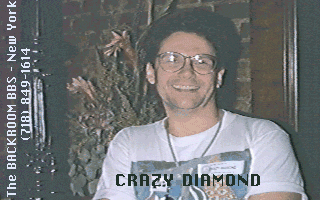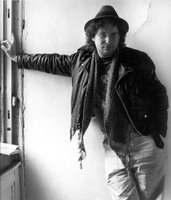A post on Bay Ridge Blog reminded me of an incident I haven’t thought of in many years. Any romance street explosives might once have held left me on the afternoon of a hot, sunny 4th of July.
In 1980, within nine months of moving to New York, I had my own apartment, a fifth floor walkup in a tenement building in the East Village. The rent was cheap.
Across the street was – still is, for all I know – the NYC headquarters of the Hell’s Angels. My apartment faced the street. Every 4th of July, they closed off the street and had their block party. Fireworks and firecrackers were always part of the activities. After the first few years, the novelty wore off, then transformed into endurance trauma.
One year, I think in the late 80s, my neighbor across the hall invited me to look after his apartment and his cat while he escaped for the 4th. This was a vacation for me as well: he lived in the back of the building, away from the explosions. And he had air-conditioning and cable television, both inconceivable luxuries to me at the time.
I was up on the roof for a while, looking down at the street, watching the people and their barbeques. People were talking, laughing, playing their radios. This year the Angels were loading up metal trash cans with boxes of god knows what, M80s? Then they set fire to them. The first few would go off, sounding like nothing more than loud firecrackers. Then more would catch, firing closer together, then they were firing all at once in a roar magnified by the metal in the can, smoke and flames rising out and up, then dying down, slowly, then silent. The devil’s Jiffy-Pop.
When I’d had enough, I went back downstairs, into the A/C. I could still hear explosions, but they were muffled, distant. I watched TV.
I felt the shock wave pass from the front of the building to the back. Through me, through every piece of furniture in the room, through the building itself. I felt the pressure wave pass through and around me. There was no other sound.
I ran to the roof, to the front of the building, and looked down. On the street, where the trash can had been, was a metal ring.
It was smoking. It took me a moment to realize it was from the bottom of the can. The bottom of the can, the rest of the can, was gone. The asphalt of the street beneath where the can had been was on fire.The scores of explosives, which had crescendoed and subsided like sulfurous popcorn throughout the day, this time had exploded all at once. The trash can was instantly converted into shrapnel slicing into the crowds at street-level. The people on the street were shocked and dazed. People shut off their radios. At first the street was silent. Then strained voices, crying, and screams. From five floors above, I saw blood.
A young man had been hanging out with friends, with family. He was staying with relatives who’d journeyed here before him. Maybe he’d come here to stay, maybe he was thinking of it. He’d only been in this country a month. I didn’t know him. I didn’t even know he existed until a piece of trash can propelled halfway down the block found him. It sliced his jugular. He was dead in minutes.
As I said, I haven’t thought of this in a long time, maybe 20 years. All these images, these sensations, are vivid in me right now. Before I read the post from Bay Ridge, I was going to go to sleep. It will take me a while to get back to that place now.



